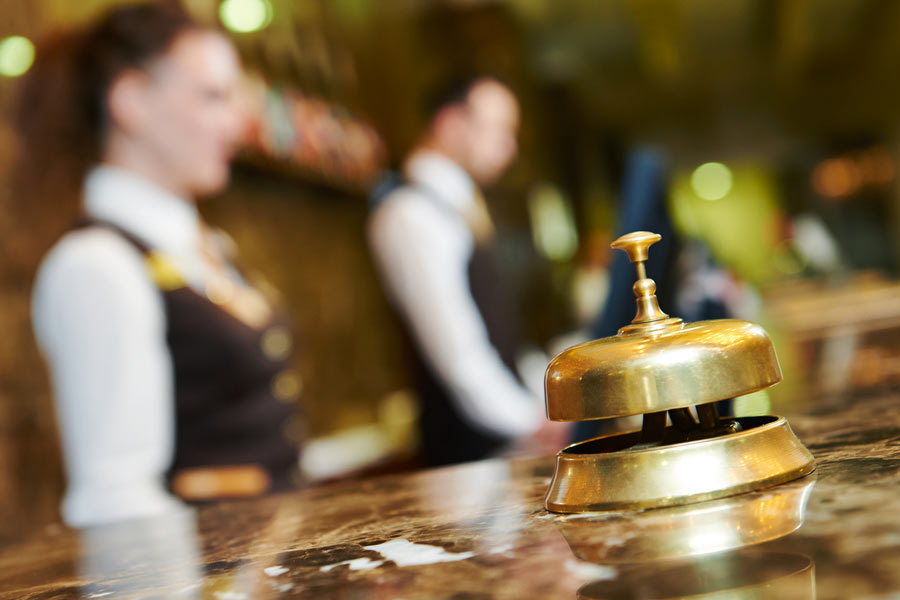The hospitality industry is buoyed by the prospects of profitable growth with a demand-supply mismatch expected to persist over the next five years.
According to estimates by Hotelivate, the supply of branded rooms in India will grow at a compounded annual growth rate of 5-6 per cent over the next five years from around 165,000 rooms to 220,000 rooms by FY28. In contrast, demand is expected in the range of 8-10 per cent compounded annual growth rate over the same period.
The industry is already reaping the benefits of a post-Covid recovery with key operational metrics on the rise. According to an HVS Anarock report, the average daily rate (ADR) for the industry in September was in the range of Rs 7,000-7,200, up 17-19 per cent on a year-on-year basis.
The revenue per available room (RevPAR) was in the range of Rs 4,200-4,464 in September, up 15-17 per cent over the year-ago period.
The growth in operational metrics is being translated into a growth in earnings before interest, taxes, depreciation and amortisation (EBITDA) for major players in the sector during the second quarter of 2023-24 (see chart).
While the industry has reaped the benefit of certain short-term triggers such as the G20 and ICC World Cup, Puneet Chhatwal, MD and CEO, IHCL anticipates the present demand-supply gap to offer pricing power to the industry.
With around two-thirds of the upcoming rooms expected to be below upscale categories, this augurs well for hotels operating in the luxury and upscale segment.
“I would like to believe that we would be able to charge higher and become more profitable. Our average achieved rate for The Pierre in New York is always north of $750. A similar hotel in a similar location in India does not even get to $150-180. So there is a gap,” he told The Telegraph.
“Everyone is talking about India becoming a $7 trillion economy in seven years. With more disposable income, there will be more discretionary spending. Some of that will come to restaurants and hotels. People like to travel, especially post-Covid and there is a change in consumer behaviour,” Chhatwal said.
It usually takes three to five years to develop a hotel from the ground up. Given the two years of disruption during the pandemic, construction activities were hit badly leading to slower than expected arrival of hotel room inventories in the market at a time demand has shot up.
“There is buoyancy in the market and people are travelling again. While foreign travel is still not at the pre-pandemic level we hope it will get better. So, there’s significant upside with foreign travel, but our business continues to be strong,” said Vikram Oberoi, MD and CEO, EIH Limited, at the second quarter earnings call.
“The global hospitality industry is seeing persistence in RevPAR growth. India too is recording strong ARR and RevPAR growth in almost all major cities. Driven by strong ARR, the flow through in the portfolio has been very good resulting in margin expansion,” Sanjay Sethi, MD and CEO of Chalet Hotels, which has global brands such as JW Mariott, Westin and Novotel, managing its properties in select cities in India, at the second quarter earnings call.
Asset management
While the hotel industry is scaling up following the asset-light approach of lending management expertise and brands to local developer partners for a fee, Chhatwal said that operating with only one business model cannot always work in India.
“In India, just being asset-light does not work. It will work if there are strong partners. But doing assets yourself is not always bad. Asset light can help faster growth because not so much of own capital is being allocated. So scaling up is faster. But that cannot be the sole business model,” he said.
The Tata group firm has developed a 371-room Ginger Santacruz which is a company-owned property and is looking to add more hotels deploying its own capital in Gujarat and Lakshwadeep.
Tatas were one of the first among Indian hotel chains to diversify into asset-light models, which has gained momentum with international chains partnering Indian realtors. ITC and EIH, two of the prominent domestic hospitality companies are also pursuing asset-light models after building some of the iconic properties in the country.










